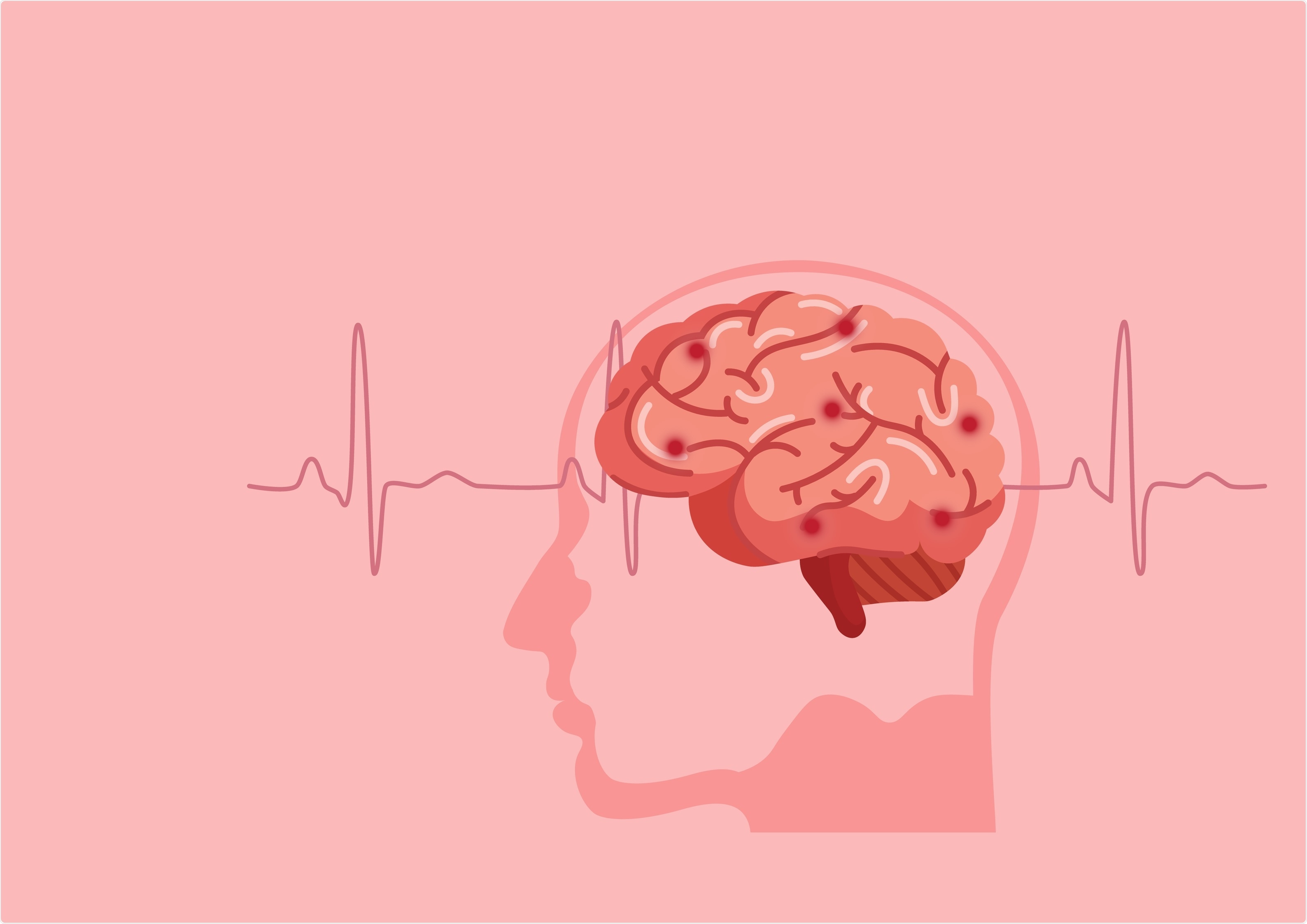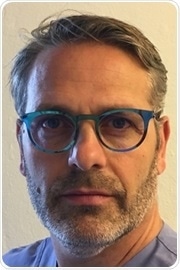Raising awareness of stroke and how to prevent it
 In this interview, we speak to Dr. Patrick Brouwer, the head of worldwide medical affairs for CERENOVUS, about stroke and how to prevent it. insights from industryDr. Patrick BrouwerHead of Worldwide Medical AffairsCERENOVUS
In this interview, we speak to Dr. Patrick Brouwer, the head of worldwide medical affairs for CERENOVUS, about stroke and how to prevent it. insights from industryDr. Patrick BrouwerHead of Worldwide Medical AffairsCERENOVUSPlease could you introduce yourself and tell us about your role at CERENOVUS?
CERENOVUS, part of Johnson & Johnson Medical Devices Companies, is focused on providing solutions used in neurovascular care. Our commitment to changing the trajectory of stroke is inspired by our long heritage and dedication to protecting patients from stroke-related disabilities.
CERENOVUS offers a broad portfolio of devices used in the endovascular treatment of hemorrhagic and ischemic stroke. At CERENOVUS, I serve as the Head of Worldwide Medical Affairs after having served as an interventional neuroradiologist and endovascular neurosurgeon for over 20 years in various countries in Europe.
What is the main mission for CERENOVUS and how are you trying to achieve it?
At CERENOVUS, we are changing the trajectory of stroke. Stroke is the second leading cause of death globally, despite the fact that many strokes can be prevented through healthy lifestyle choices. For those that suffer a stroke, we want CERENOVUS to be there so that patients can get back to their fully functioning lives.

Image Credit: Piyaphat_Detbun/Shutterstock.com
It is estimated in the U.S. alone that 795,000 people will suffer a stroke annually which equates to about one stroke every 40 seconds. What is a stroke and why are the statistics so high?
A stroke occurs when a blood vessel that carries oxygen and nutrients to the brain is either blocked by a clot or bursts. There are two types of stroke: ischemic and hemorrhagic.
Ischemic strokes account for 87% of all cases. This type of stroke occurs when a blood clot travels to a vessel in the brain and cuts off the blood supply. Fast clot removal can often reverse symptoms.
Hemorrhagic strokes, although less common, can be more severe. These types of stroke are caused by a brain aneurysm burst or rupture of weakened blood vessels. There are also devices to treat this type of stroke and stop the bleeding.
Statistics also show that stroke also disproportionately affects Black Americans with their risk being nearly twice as high. They also have the highest rate of death due to stroke. Why is this and what more should be done here?
Black patients are disproportionally affected by stroke risk factors and have poorer experiences when it comes to timeliness and access to stroke care.
By raising awareness of stroke risk factors; teaching tips for maintaining a healthy lifestyle; and educating on risk factors and how to spot the signs and symptoms of a stroke, we can help reduce the impact of stroke for communities of color.
Despite these shocking statistics, 90% of strokes are preventable. Why is stroke so easily preventable in most cases and how can individuals reduce their risk for stroke?
Like most health conditions, maintaining a healthy lifestyle is the easiest way to reduce your risk of stroke. Managing conditions like high blood pressure, diabetes, obesity, and atrial fibrillation (AFib), stopping smoking, eating a healthy diet, and exercising regularly all can help lower your risk for stroke.
The most common way of recognizing the signs and symptoms of stroke is using F.A.S.T. Can you give us an overview of this?
It is very important that if you suspect that you or a loved one is having a stroke, you seek emergency care immediately. In this field, we often say that “time is brain” – the more time that goes by, the more brain cells die, therefore impeding chances of recovery or survival.
One of the easiest ways to remember the signs and symptoms of stroke is the acronym F.A.S.T.:
F – Facial drooping
A – Arm weakness or difficulty raising one or both arms
S – Speech difficulty or slurred speech
T – Time to call for emergency help
Acting F.A.S.T. can help stroke patients get the timely treatments they need to survive.

Image Credit: Irina Strelnikova/Shutterstock.com
What are some of the current treatment options available for stroke? What involvement does CERENOVUS have in the treatment of stroke?
In an ischemic stroke, caused by blood clots, a procedure called mechanical thrombectomy (MT) has proven successful, and more than half of patients treated with stroke thrombectomy regain functional independence. MT is a procedure using a catheter threaded up the femoral or radial artery to remove a clot from a patient's artery within the brain. The sooner MT is performed, the higher the chance of success.
Depending on the type of hemorrhagic stroke, treatment options may include interventional procedures to stop the bleeding.
CERENOVUS offers a broad portfolio of devices used in the endovascular treatment of both ischemic and hemorrhagic strokes with the goal of providing solutions to reverse or stop stroke.
Why are timely responses to treatment critical in managing stroke?
When it comes to stroke, every minute counts. For every minute that someone is having a stroke, 1.9 million brain cells are lost. So, the quicker a person can be treated for stroke, the more likely that person’s brain – and therefore the function of arms, legs, speech, or thinking ability – can recover.
Simply, the longer a stroke goes untreated, the greater the chances are of patients experiencing long-term disability or even death.
Do you believe that if more people were aware of the risk factors for stroke and could more easily identify signs and symptoms, we could potentially reduce the number of people suffering from a stroke each year?
I believe that with increased education around the signs, symptoms, and risk factors for stroke we could reduce the number of people who suffer from long-term disabilities due to stroke.
I hope on this World Stroke Day that people take time to learn more about how to be F.A.S.T when spotting a stroke and how to stay healthy to reduce their risk of stroke and other diseases.
Where can readers find more information?
Visit https://www.jnjmedicaldevices.com/en-US/condition/stroke for more information on stroke, risk factors, and treatment options.
About Dr. Patrick Brouwer
Dr. Patrick Brouwer is an accomplished clinician and scientist who has made significant contributions in the field of interventional neuroradiology and endovascular surgery. He has served in senior staff positions for over 20 years as a neurointerventionalist at various university hospitals in Europe and has published close to 100 scientific papers and book chapters and lectured on more than 400 occasions around the world on a variety of topics related to neurointervention. He currently serves as Head of Worldwide Medical Affairs for CERENOVUS.
Dr. Brouwer obtained his medical degree from the Free University in Amsterdam, the Netherlands.
Sponsored Content Policy: News-Medical.net publishes articles and related content that may be derived from sources where we have existing commercial relationships, provided such content adds value to the core editorial ethos of News-Medical.Net which is to educate and inform site visitors interested in medical research, science, medical devices and treatments.
Source: Read Full Article
